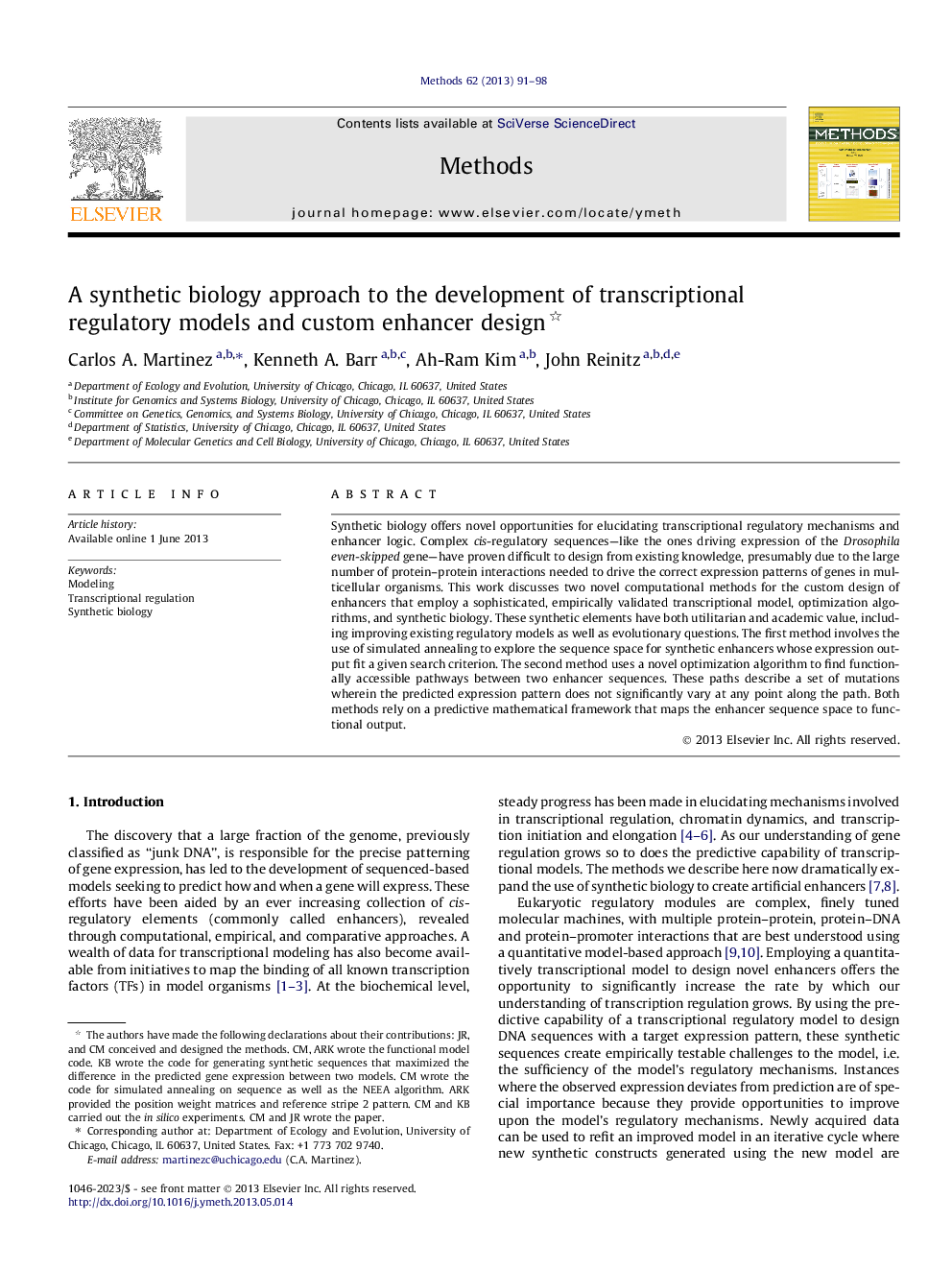| Article ID | Journal | Published Year | Pages | File Type |
|---|---|---|---|---|
| 1993622 | Methods | 2013 | 8 Pages |
Synthetic biology offers novel opportunities for elucidating transcriptional regulatory mechanisms and enhancer logic. Complex cis-regulatory sequences—like the ones driving expression of the Drosophila even-skipped gene—have proven difficult to design from existing knowledge, presumably due to the large number of protein–protein interactions needed to drive the correct expression patterns of genes in multicellular organisms. This work discusses two novel computational methods for the custom design of enhancers that employ a sophisticated, empirically validated transcriptional model, optimization algorithms, and synthetic biology. These synthetic elements have both utilitarian and academic value, including improving existing regulatory models as well as evolutionary questions. The first method involves the use of simulated annealing to explore the sequence space for synthetic enhancers whose expression output fit a given search criterion. The second method uses a novel optimization algorithm to find functionally accessible pathways between two enhancer sequences. These paths describe a set of mutations wherein the predicted expression pattern does not significantly vary at any point along the path. Both methods rely on a predictive mathematical framework that maps the enhancer sequence space to functional output.
